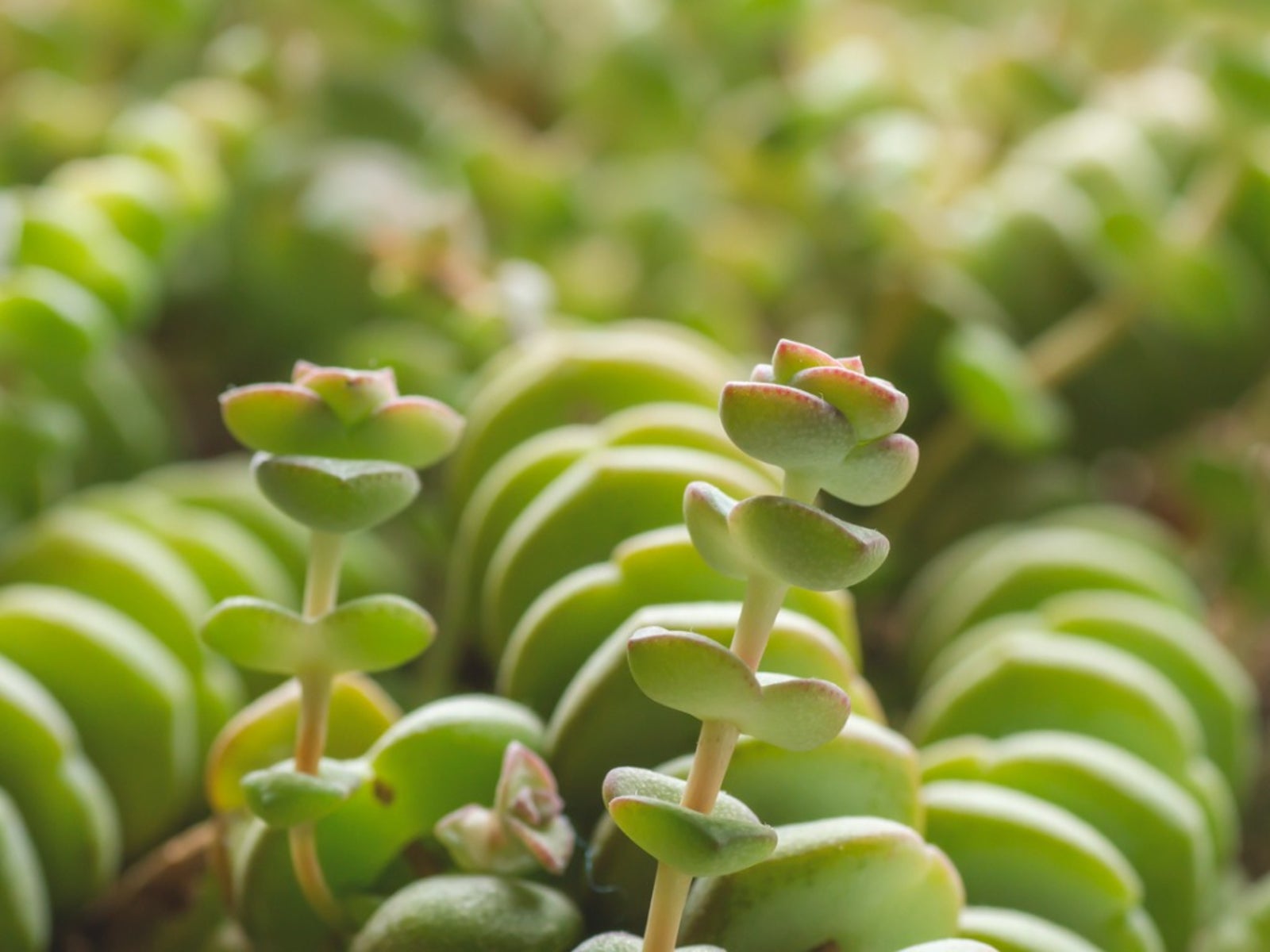String Of Buttons Crassula: What Is A String Of Buttons Succulent


Stacked crassula plants, like the string of buttons, exhibit an unusual form as gray-green leaves spiral from the plant. Adding the string of buttons plant to your home increases interest in your collection or mixed succulent container.
What is a String of Buttons Plant?
Crassula perforata, also known as string of buttons succulent, is a sprawling and shrubby plant that reaches 18 inches (46 cm.), beginning as an upright specimen. Later, this plant becomes prostrate due to height and weight. Short stacks of triangular leaves often turn pinkish red on the edges, making the plant stand out. Small, white,star-shaped flowers blossom on the well-placed and happy string of buttons. It is most attractive when it cascades from the sides of a pot.
The plant usually grows in colonies of three or more. When transplanting, keep the colony together for a full look. Some define them as “scrambling” in the sense of aggressive growth. You’ll love their multiplication, especially if you separate them for propagation.
Growing a String of Buttons Crassula
When growing a string of buttons, babies spring from the bottom of the plant. Divide and repot in spring, when possible. If you want to keep them upright, prune from the top and root the cuttings for more plants. You may also remove the babies with a sharp cut.
You can grow this great plant outside in the ground if you live where temperatures don’t dip below 50 degrees F. (10 C.), typically in USDA hardiness zones 9-12. This is the best opportunity for them to scramble, through your other succulents and flowers planted in the same bed. In other areas, you may put containers of them outside in morning sunlight in appropriate temperatures.
Care of a stacked crassula starts with planting it in appropriate soil, fast draining with amendments to ensure no water remains on the roots. Don’t water often. You’ll find most crassula, including this one, are often watered too frequently. If you can, collect rainwater for infrequent watering of this and other succulent plants.
Avoid hot afternoon sun in summer. Even crassulas, among the hardiest of these plants, don’t like too much heat and hot sun in high 80- to 90-degree F. (27-32 C.) range. When moving these plants outdoors in spring, acclimate gradually to full morning sun. Once you find the proper spot, leave them there until time to bring them inside in winter.
Sign up for the Gardening Know How newsletter today and receive a free copy of our e-book "How to Grow Delicious Tomatoes".
Succulents are usually not prone to insects and disease, but may sometimes be affected by mealybugs and fungal issues. Move the infected plant out of the sun before treating with 70 percent alcohol. More than one treatment is usually needed for this pest.
For minor fungal issues, sprinkle cinnamon on roots and in the soil. If this does not correct the problem, use an organic fungicide.

Becca Badgett was a regular contributor to Gardening Know How for ten years. Co-author of the book How to Grow an EMERGENCY Garden, Becca specializes in succulent and cactus gardening.